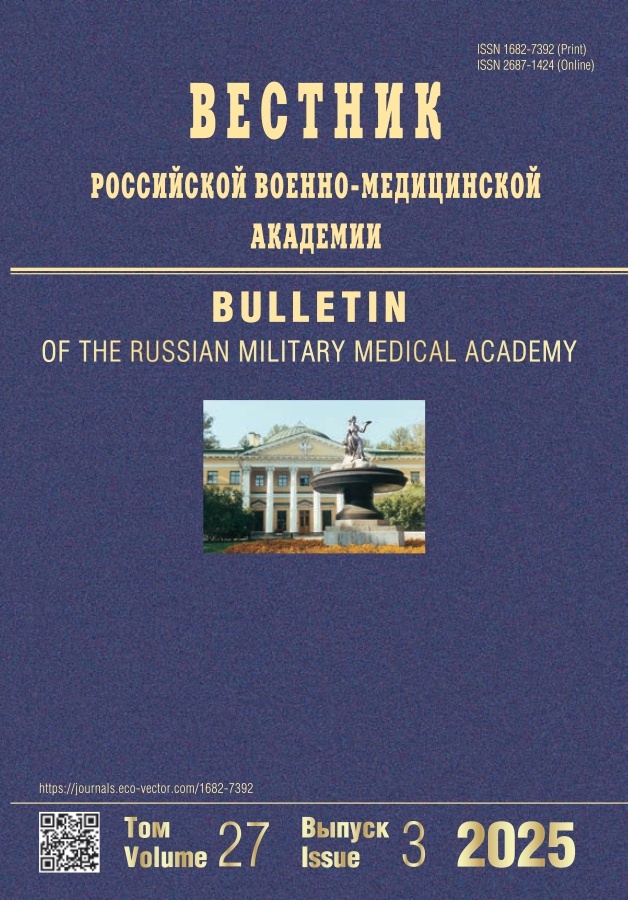Early bronchodilatory response to the first dose of indacaterol/glycopyrronium as an additional individual predictor of their effectiveness in the treatment of chronic obstructive pulmonary disease
- Authors: Sharova N.V.1, Grishaev S.L.1, Cherkashin D.V.1, Efimov S.V.1, Kharitonov M.A.1, Zakharova A.I.1, Zakharova I.M.1
-
Affiliations:
- Military medical academy of S.M. Kirov
- Issue: Vol 22, No 4 (2020)
- Pages: 17-22
- Section: Clinical trials
- URL: https://journals.rcsi.science/1682-7392/article/view/62798
- DOI: https://doi.org/10.17816/brmma62798
- ID: 62798
Cite item
Abstract
The effectiveness of the early bronchodilatory response of the first dose of a fixed double combination of long-acting bronchodilators of various classes indacaterol/glycopyrronium and long-acting anticholinergics glycopyrronium and Tiotropium in patients suffering from stable chronic obstructive pulmonary disease is compared. It was found that in all patients included in the study and suffering from chronic obstructive pulmonary disease, changes in functional respiratory indicators were accompanied by positive and comparable dynamics of clinical signs: a decrease in the severity of shortness of breath, the impact of the disease on the quality of life and increased tolerance to physical activity. It was found that the combination of indacaterol/glycopyrronium provides rapid, pronounced and prolonged bronchodilation in patients suffering from chronic obstructive pulmonary disease compared to the separate use of glycopyrronium and Tiotropium. Consistent use of glycopyrronium and salbutamol leads to maximum bronchodilation, which makes it advisable to separate the use of prolonged bronchodilators when initiating therapy for chronic obstructive pulmonary disease. Therefore, there is a clinical feasibility of taking not only fixed combinations of bronchodilators of different classes, but also their consistent use. The results of an early bronchodilatory response to the first dose of indacaterol/glycopyrronium can be used as an additional individual predictor of their effectiveness in the treatment of chronic obstructive pulmonary disease.
Full Text
##article.viewOnOriginalSite##About the authors
N. V. Sharova
Military medical academy of S.M. Kirov
Author for correspondence.
Email: vmeda-nio@mil.ru
Russian Federation, Saint Petersburg
S. L. Grishaev
Military medical academy of S.M. Kirov
Email: vmeda-nio@mil.ru
Russian Federation, Saint Petersburg
D. V. Cherkashin
Military medical academy of S.M. Kirov
Email: vmeda-nio@mil.ru
Russian Federation, Saint Petersburg
S. V. Efimov
Military medical academy of S.M. Kirov
Email: vmeda-nio@mil.ru
Russian Federation, Saint Petersburg
M. A. Kharitonov
Military medical academy of S.M. Kirov
Email: vmeda-nio@mil.ru
Russian Federation, Saint Petersburg
A. I. Zakharova
Military medical academy of S.M. Kirov
Email: vmeda-nio@mil.ru
Russian Federation, Saint Petersburg
I. M. Zakharova
Military medical academy of S.M. Kirov
Email: vmeda-nio@mil.ru
Russian Federation, Saint Petersburg
References
Supplementary files









